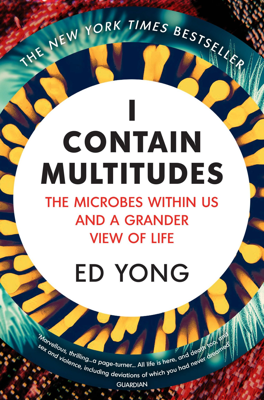Tomorrow the World
Microbial Auras and Human Impact on Environmental Microbiomes
Jack Gilbert, alongside his family and research team, embarked on the Home Microbiome Project to study how humans influence environmental microbial communities. This project revealed that individuals rapidly introduce and spread their microbiomes to their immediate environments, reshaping the microbial landscape of their homes. For instance, a family's microbes pervade various common touchpoints like light switches and door knobs incredibly quickly, often re-establishing a familiar microbial environment even after moving to new homes. Additionally, roommates and couples share significantly overlapping microbial profiles, further influenced if a pet like a dog is present, due to the pet introducing external microbes into the home.
Institutional Studies in Controlled Environments
The studies extended beyond personal living spaces to controlled environments like aquariums and hospitals. Gilbert analyzed the microbiomes of dolphins in an aquarium, using the controlled conditions to closely monitor microbial exchanges between the animals, water, and human handlers. This confined and well-monitored environment allowed his team to deeply understand microbial interactions in a habitat.
In hospitals, particularly a newly opened facility at the University of Chicago, Gilbert and his student, Simon Lax, investigated how human presence alters the microbial makeup of a sterile environment. This study aimed to trace how pathogens spread within a healthcare setting, potentially offering strategies to mitigate disease transmission.
The Consequences of Over-Cleaning
Both in controlled settings like aquariums and human-centric environments like hospitals, a stark revelation was the detrimental effects of excessive cleanliness. Similar to taking antibiotics, over-cleaning can strip environments of benign microbes that typically compete with harmful species, potentially leading to an increased risk of disease. Gilbert’s observations suggested that moderate, rather than extreme sanitization practices might be more beneficial for maintaining a healthy microbial balance that naturally suppresses harmful pathogens.
Microbial Engineering in Architectural Design
Gilbert’s research has propelled him to consider architectural designs that support beneficial microbial presence. Teaming up with architects and city planners, he proposed integrating microbial management into building designs to promote healthy, disease-resistant environments. This includes ideas like biodegradable microbial spheres containing beneficial bacteria which could be deployed in buildings to enhance their microbiomes.
Forensic and Environmental Applications
The implications of these studies span forensic science, where microbial traces can potentially reveal the presence and movements of individuals in an environment. Gilbert also applied his insights to broader ecological scales, addressing environmental issues such as urban flooding by suggesting the use of microbes in creating bio-wetlands that manage water and prevent mold growth in flood-prone areas.
Conclusion and Future Outlook
Gilbert's work underscores a shift towards embracing and managing our microbial environment rather than seeking to overly sterilize it. This approach aligns with a broader understanding of the integral role microbes play in health and disease, ecology, and even urban planning. The potential applications of microbial management are vast, ranging from enhancing building designs to controlling public health risks in a sustainable and ecologically friendly manner.
